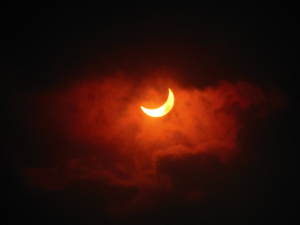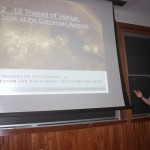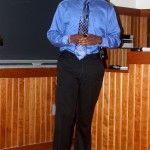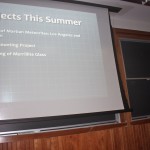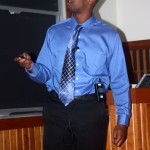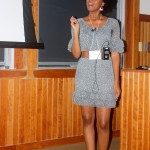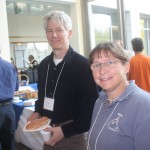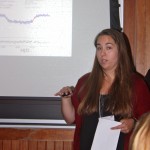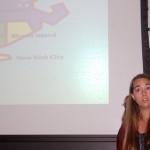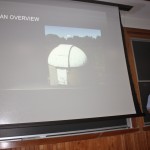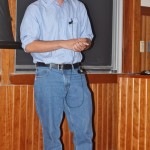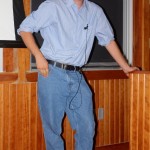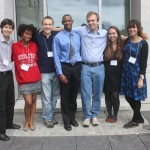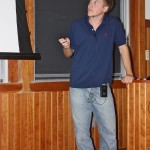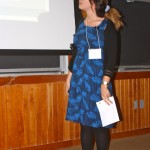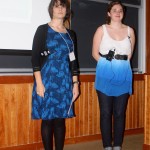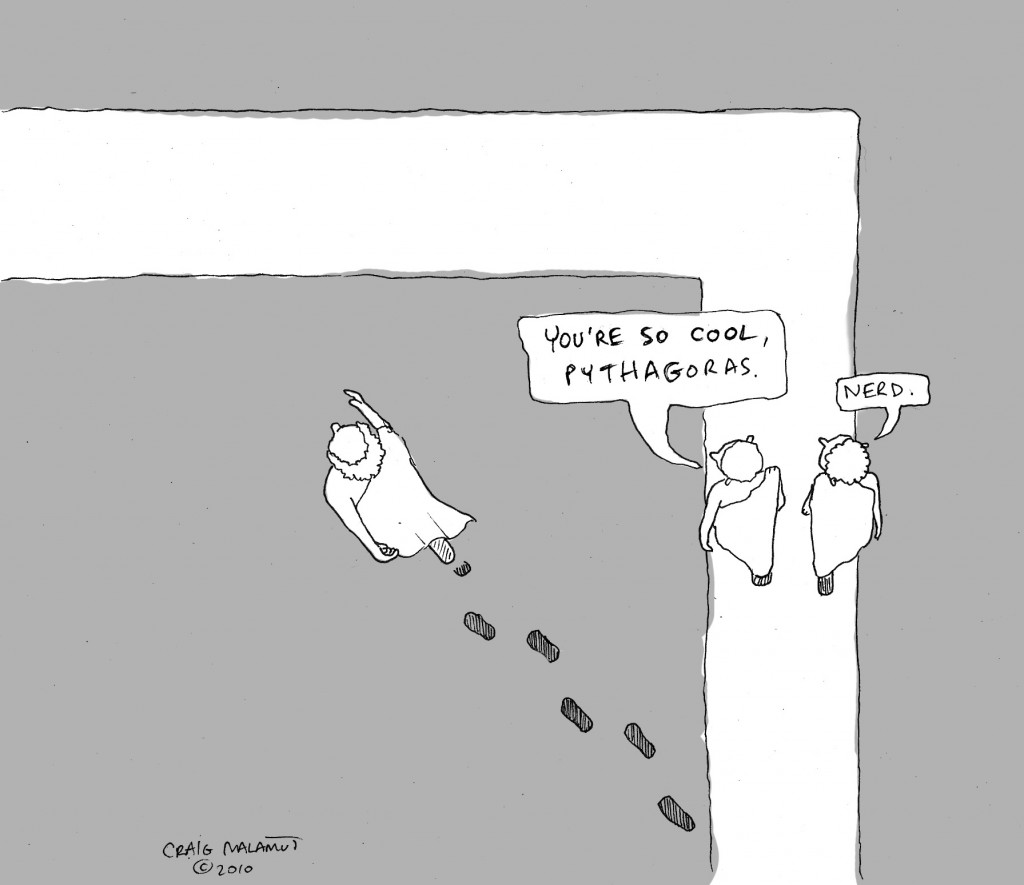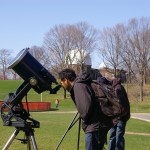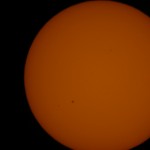
Imagine a clear night at the Van Vleck Observatory, you and all your friends have decided to come to a weekly Public Observing Night and take a look at the stars. You walk into the large dome atop Foss Hill and see the magnificent 20″ Alvan Clark Great Refractor before you. It seems to be pointed at a particularly bright star in the sky, and just as you’re about to put your eye to the eyepiece (the above picture shows you almost there), you realize that’s no star, but in fact the planet Jupiter.
You see large bands of clouds, part of the planet’s turbulent atmosphere. Nearby to Jupiter are four other points of light. This time they aren’t stars or planets but instead are Jupiter’s four largest moons. Known as the Galilean Moons or Galilean Satellites, they are named after Galileo Galilei who discovered them in 1610.
From left to right in the image the Galilean Moons are Callisto, Ganymede, Io, Europa. These moons are wonderful specimens in the menagerie of solar system bodies. Callisto is a crater-filled world; Ganymede a moon larger than Mercury; Io a volcanic world locked tight in Jupiter’s gravity; and Europa an ice-covered body with possible liquid oceans underneath. If you’re timing is just right you may even be able to see one or several moons pass in front of Jupiter; from the Jovian cloud tops you’d be privileged enough to see something akin a solar eclipse.
In addition to being an impressive view, Jupiter and its moons have also played an important role in the history of planetary impacts and determining the speed of light.
Speaking of history, the 20″ refractor telescope saw it’s “first light” on 26 July 1922. In the intervening years, up until the 1990s, it was used for research determining the distance to close stars. Distances were determined by a method known as parallax, where you look at the movement of a nearby star compared to much farther ones. A simple example of parallax is looking at your finger through one eye, then the other and seeing its position change compared with objects in the background.
Currently the telescope is used for public observing, as the photographic plates it used for imaging and measurements have mostly gone the way of the dinosaurs (or Pluto’s planet status for that matter). The rosy glow you see around the eyepiece is from lights in the dome tinted red to help preserve your night vision.
Now slaked of your thirst for the celestial, you and your friends leave with a bounce in your step, knowledge in your head and a feeling that you’re king of the world after having seen this most regal of planets.
(N.B.: This image, taken on 1 Dec 2011 ~2109EST, is an overlay of many different exposures, as my camera is not nearly as good as the human eye at adapting to different light levels.)
